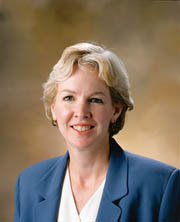
Chief Editor
pfeditors@bnpmedia.com
Molecular gastronomy is more familiar to Europe than the U.S. A New York Times columnist had sent a “high-school-French” email to the publisher of This's Les Secrets de la Casserole, asking why it had been translated into some ten languages, including Polish, before approaching the huge English-speaking market. She never received a reply and surmised that her French was so bad they simply thought her email was spam. Happily, Dr. This kindly responded to my emails…and in English!
He clarifies that molecular gastronomy is very different than Culinology®. Also, the initial molecular gastronomy program, his Ph.D. thesis, was wrong since it was a mix of science, technology and politics. Its objectives are now: 1) Explore the love component of cooking. 2) Explore the art component of cooking. 3) Explore the technical component of cooking, including precisions and definitions.
He writes that recipes consist of two parts, the “definition of the dish” and “precisions.” Some precisions seem wrong and are wrong: mayonnaise made by women having their periods are not more likely to fail. Some seem wrong but are true: cutting of a cooked pig's head makes its skin cracklier. Some seem true but are wrong: uncovered cooking pans will not produce greener vegetables due to acid volatilization. Some seem true and are true: egg whites should be firmly whipped in the preparation of soufflés. It is theorized that the more likely a recipe is to fail, the more precisions are developed for it. This was supported by quantifying the number of precisions for recipes and comparing it to recipe robustness. This is calculated by the equation P=R(pi) i=1 to n, where P is a product and R is variables.
I have no room to write about theoretical yet tantalizing new dishes such as kientzheim of butter, cheese Chantilly or Faraday of lobster. However, for a delightful read, see www.college-de-france.fr/chaires/ chaire10/page_herve/Molecular_Gastronomy.
 Claudia Dziuk O'Donnell is Chief Editor and Associate Publisher of Prepared Foods magazine including its NutraSolutions and Culinary sections. Her responsibilities include determining the editorial content of the print publication and the New Products Conference.
Claudia Dziuk O'Donnell is Chief Editor and Associate Publisher of Prepared Foods magazine including its NutraSolutions and Culinary sections. Her responsibilities include determining the editorial content of the print publication and the New Products Conference.